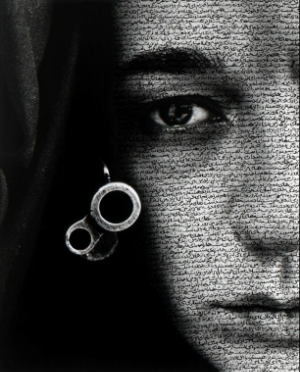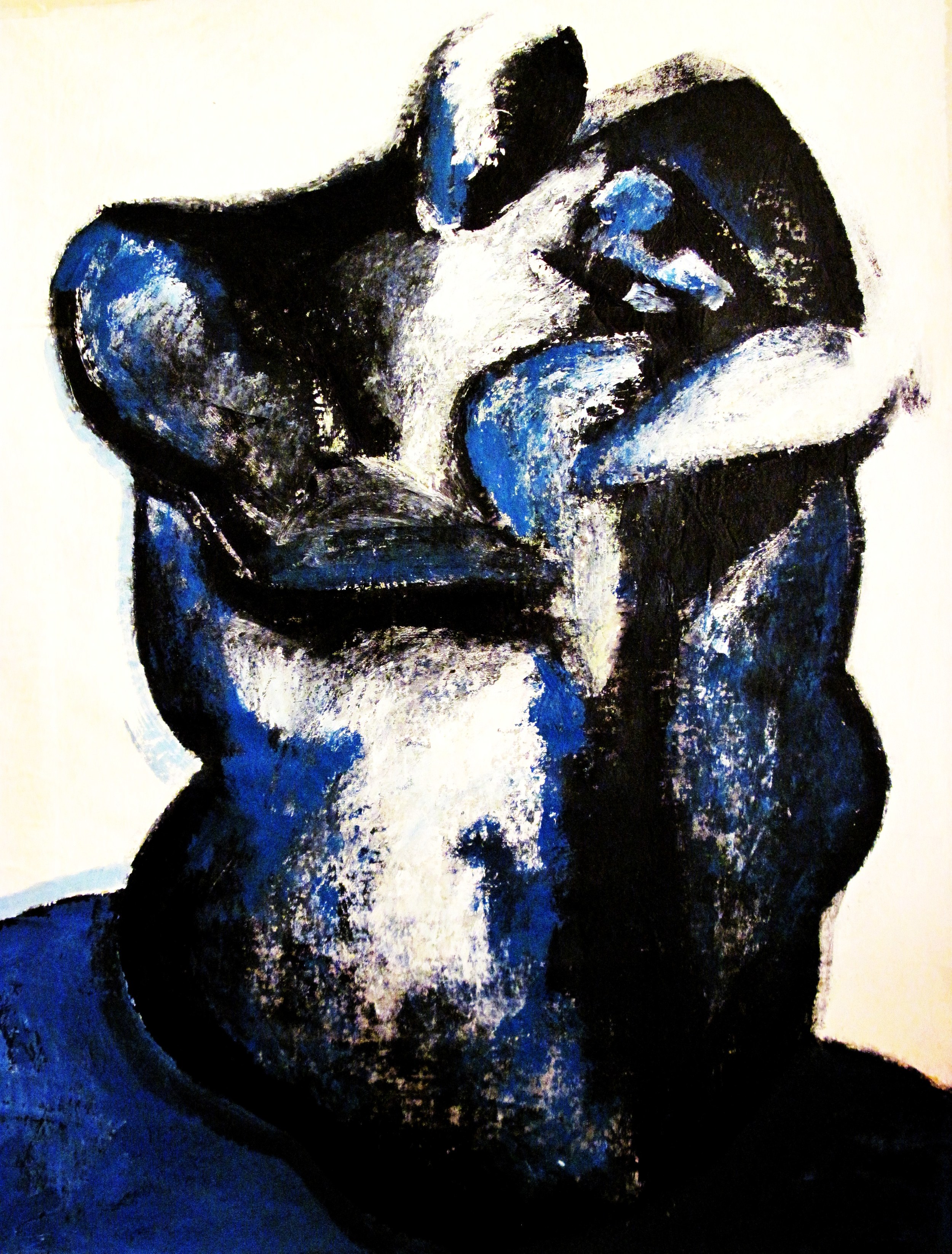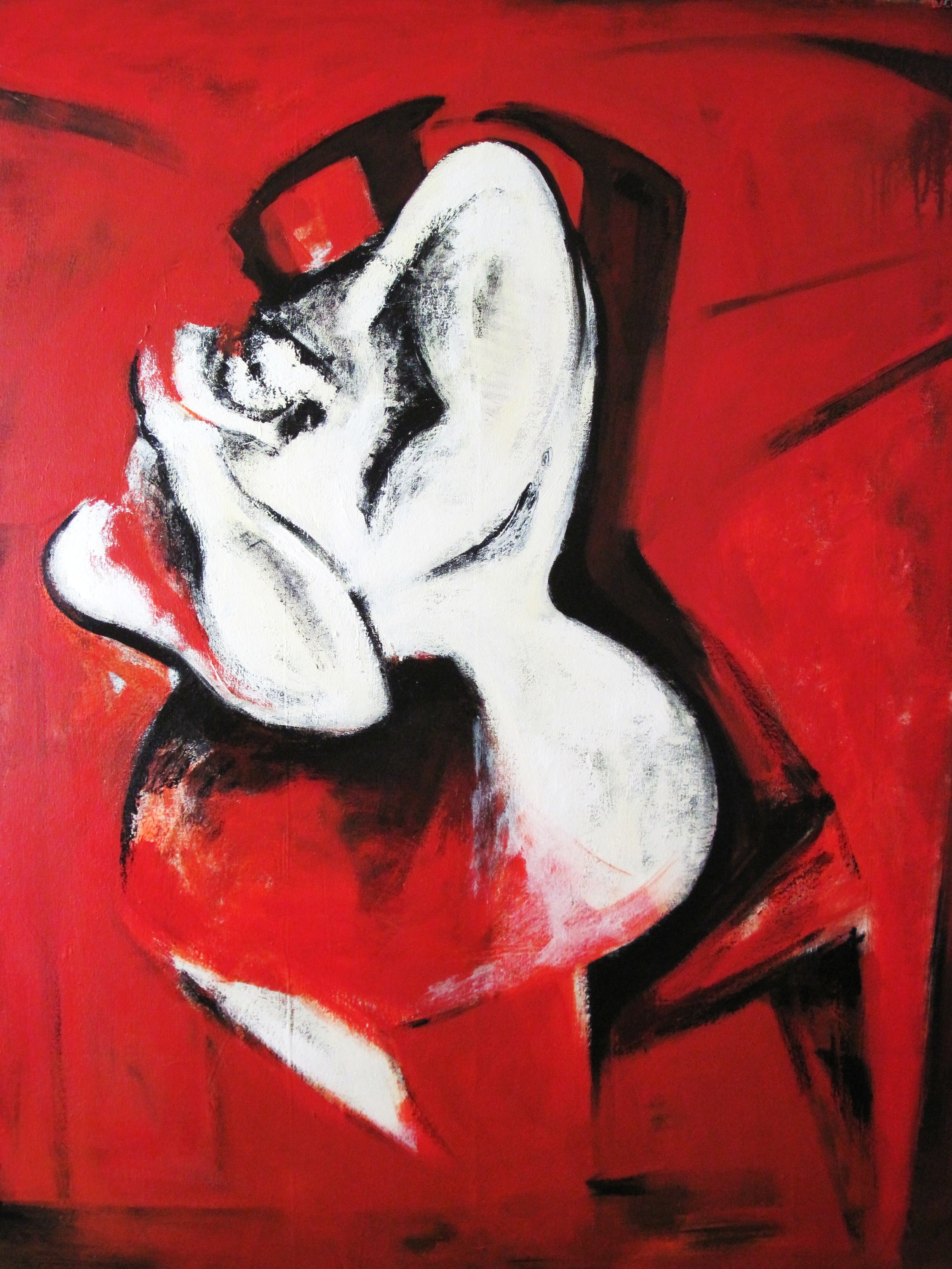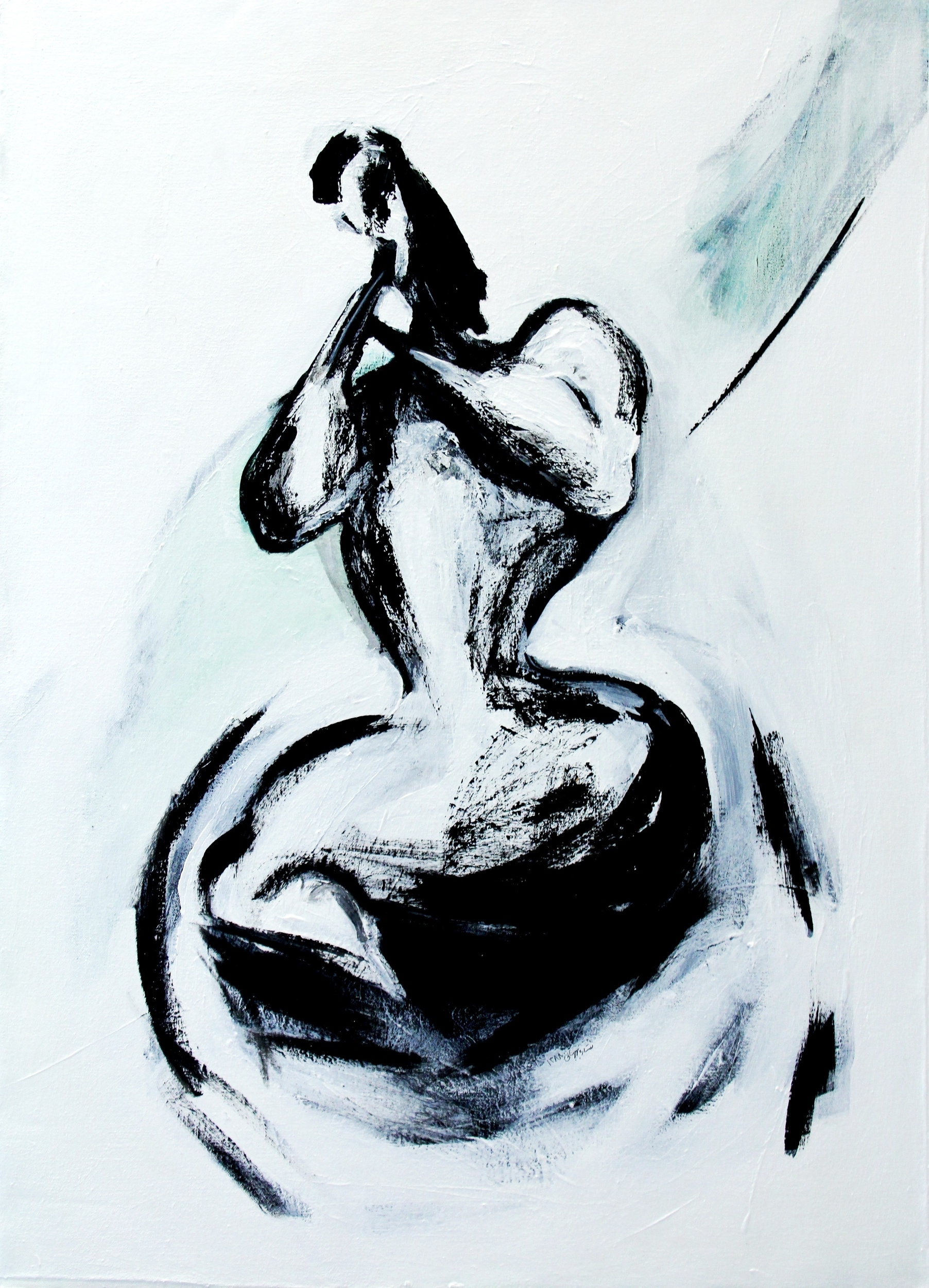Feminist responsibility when researching art and gender in the contemporary Middle East
What influence does gender have on an artist’s production of fine and modern art in today’s Tehran, Iran? Does gender embody everyday life experiences and influence every female artist’s work? How can feminist scholarship and journalism examine Middle Eastern fine, modern and contemporary arts in a responsible way without repeating colonialist narratives?
In order to approach these questions, I examine the representation of Middle Eastern and North African women in Euro-American Orientalist, diasporic neo-Orientalist and urban Iranian women artists’ work. I argue that responsibility has to matter when examining the relationship between gender, arts and society in the region from a feminist perspective in scholarship and media in order to challenge and complicate one-dimensional interpretations of women’s art in the region. Referring to an interview with Tehran-based artist Setareh Behbahani in August 2015, I suggest that women’s art needs, more than ever, to be embedded into the local, regional and international context in which it was produced.
In Central Europe, the most discussed, fantasised and visualised gendered space has been that of the Middle Eastern and North African “harem” during the 18th and 19th century. The harem was a recurring trope of European Orientalist painting and literature, which fictionalised the “Oriental” women’s sexuality. The de-mystification of the “Orientalised Oriental” that Edward Said describes in Orientalism (Said, 1979) unveils a colonial discourse that created over centuries until today’s neo-colonial era of on-going political, economic and cultural interferences, an essentialist idea of passive and silent “Oriental” female bodies (see also: Amos and Parmar, 1984; Spivak, 1988). As the allegedly ‘post-colonial’ mission is about uncovering power relations between coloniser and colonised it fails to rethink the socio-political and economic continuities and changes of this relation in the end of the 20th century and beginning of the 21st century.
As political geographer Derek Gregory (2004: 16) explains, the “colonial presence” though is not just shaped through political, military and international legal action, but also by cultural practices that infiltrate local cultural images and practices. In the colonial mind-frame the female body as “the standard-bearer of the nation’s culture” (Bulbeck, 1998: 29) became the measure of backwardness or civilisation. While Muslim women were not visible to male European painters, Eugène Delacroix for instance used the photographic technique of Daguerreotype - for his Odaliske from 1857 – with which he took pictures of naked models and reproduced them on canvas within the “Oriental” scenery of a hamam or private chambers filled with colorful carpets and tiles, serving maids and exotic plants. In contrast to many other Orientalist painters though, Delacroix actually travelled with a French diplomatic delegation to Morocco during the era of French imperialism in North Africa. However, most of his Orientalist paintings are based on the impressions he collected during his travels. The paintings were produced back in Europe where he used his memories and sketches to recreate his individual impressions of the spaces he saw. In the centre of these master-pieces that go beyond naturalist replications of the seen are colours and shapes, which become central elements of modern arts (Néret, 1999).
Shirin Neshat, Speechless (Women of Allah series), 1996
Source: Artsy
While Orientalist painting presented a sexualised image of “Oriental” women, neo-Orientalist artworks of the 20th and 21st century represent, especially Muslim women, through a visualisation of patriarchal violence on women’s bodies. A case in point is the work of Shirin Neshat, a celebrated artist in Euro-America. Neshat has extensively engaged with the chador (Farsi for tent), a veil that covers everything but the face, and the women bodies in her artwork. The artist, who since 1975, has been residing in the US, has gained fame for her work in the West with her black and white photographic series, Women of Allah (Zanganeh, 2006: 44-45) depicting weapons and veiled women whose bodies are inscribed in Farsi calligraphy. While being very expressive, the narrative of Neshat’s series represents Iranian women in the Islamic Republic as mere subjects of paternalistic and military violence. In this way, in all its aesthetic power, reproduces the “totalising – and silencing – tendencies” that Said (1979) describes in Orientalism: as a diasporic artwork the photographies represent the artists personal perception of her country of origin. While in Tehran this work is perceived among artists as reductive and one-dimensional, not grasping the diversity of women experiences in Iran, it rather speaks to the western gaze linking Islam and Iran, even before 9/11, to pure violence. The women in Neshat’s work has no agency and remains speechless in the same way that the sexualised women bodies in European Orientalist paintings remain silent and passive.
As art historian Hamid Keshmirshekan (2009: 31) notes about Iranian diaspora artists, their works are critical engagements with “questions of context, identity, critical interpretation of ‘self’ and ‘other’ and cultural memory” often resulting in “socio-political commentaries” based on the artist’s “personal narrative”. What is perceived in Europe and North America then as a representation of Muslim women denies the different roles women have played in public and in the private sphere of the domestic space in Iran. Also, it creates the impression that all Iranian women, are Shia Muslims, rendering impossible the various ethnic groups and migrants living in Iran. The visual knowledge provided by the diasporic artist differs from local Iranian artwork. The position from which the woman artists produces art, hence, matters and makes it necessary for the feminist researcher to situate the artwork in international, regional and local artistic discourses. Despite shifting meanings of artwork depending on where and by whom it is being read, one cannot deny the necessity to tackle gender-based and sexual violence through art. Particularly, in today’s Tehran, issues such as sexual harassment on the streets and in private, discrimination of women at work and in university and domestic violence are social issues that need to be highlighted to create an atmosphere of solidarity and cooperation among male and female residents of the capital city that is home to over 8 Million people. So, how can a feminist reading address this dilemma where on the one hand I want to consider as a feminist gender-based violence and discrimination while on the other hand, women art is constantly positioned as a form of representing whole groups of women and girls?
An analysis of arts potential to create knowledge can help to examine whether visual arts can be a strategy to materialise and visualise “embodied” experiences, as feminist geopolitical thinker Hyndman (2004) describes knowledges from zones of war and conflict - also in the case of post-war Iran. Hyndman (2004: 309) argues that the analysis of “embodied vision” which provides “ontologically committed, partial perspectives” can have the “potential” to undermine prevailing one-dimensional “geopolitical narratives”.
Reading Behbahani’s contemporary artwork from her 2009 series “signifier of [the] body” in Tehran shows as she herself describes it “human with a life and identity of their own”. Behbahani’s figurative art depicts abstract bodies alone and in relation with each other. “There are moments when gender influences my everyday life and therefore, also, my artwork. But most of the time art is to me an aesthetic form of articulation. A writer writes and I see”. Behbahani says that creativity helps the artist in the process of art making to escape the problem of replication: “I want to catch with my work the Zeitgeist of the era and space of Iran I am living in from a woman’s perspective”.
Referring to Behbahani’s series, visualising the “embodied” experience of everyday life allows her to visualise her individual perspective on urban society and herself as a member of this social formation. “Baudelaire writes about the life of the modern artists that they go into the heart of society and their vocation is to watch”, explains the artist. Behbahani who has made negargari works (Persian miniatures) for a while, explains that this phase ended: “I could not relate to that image of the musician, to whose music a beautiful woman is dancing, because it did not relate to the life in the society I live and the person I am when I am when I am in traffic for two hours every day and see people fighting in the streets. This is when I decided that I want to be an artist who draws what she sees happening in society”.
While Orientalist masterpieces, for instance Eugène Delacroix’s Women of Algiers or Jean-Auguste-Dominique Ingres’ The Turkish Bath, imagine women’s exotic and hidden spaces in Islamic societies and neo-Orientalist art reduces feminity to repression and subjection, Behbahani’s abstract and faceless bodies of intense colour and rounded shapes, are a product of a woman artist’s personal perspective, however, because of the artist’s abstract style and the lack of symbolism in the artwork there is no claim to represent “the Iranian women” living in an Islamic state. Behbahani creates difference among the bodies, framed by rough and thick brushstrokes, by her use of limited and intense colors in each piece, which create an individual personality for each of the figures. Some of the bodies have feminine shapes and create the impression of gender difference while in others the relation of figures to one another, such as one great figure hugging a smaller and more vulnerable seeming body create the impression of a male-female relation. Others sit next to each other, but seem invisible for each other. Other works of the series show bodies in an embryonic position, with the head bowed to the side positioned lonely in the middle of nowhere, lost, thoughtful and hopeless. While Behbahani’s artwork is informed by her personal experience of love and loss and living in Tehran in times of turmoil and economic regression, gender is one of several dimensions signifying the bodies of which some do not have a gender at all: the bodies do not realise that they are sharing the painful experience of hopelessness and loss. While produced in and inspired by Tehran, the artist work visualises bodily experiences that can be also understood in other geographical contexts where exists a clash of interests among lovers, individuals, racialised bodies, people of different ages and classes.
Eugène Delacroix, Women of Algiers in their Apartment, 1834
Source: Wikipedia
Conducting a feminist research project responsibly can be realised by contextualising Middle Eastern artwork within the local and regional context in which it is being produced. At the same time, the temporality of the artwork allows us to examine the artists in their role as visual thinkers and individual members of society with personal challenges and duties. As such, feminist scholarship can research Middle Eastern visual arts in terms of gender without neglecting that gender intersects with the artist’s social class, age, belief, space of origin and local socio-politics. Behbahani’s artwork renders visible the possibility of depicting embodied experience of loss, fear and loneliness. However, other Tehrani women’s artwork explicitly making use of symbolism represents the diversity of urban lifestyles and commodification of the female body. Exemplary for the tendency to hyper-feminise the embodied self are brilliantly socio-critical urban artworks such as in “Share Me” and “Just for you” by Homa Arkani who engages with oil on canvas with the doll-ization of the Tehrani girl inbetween neo-liberalisation and traditional gender roles. Or the hyperrealist oil paintings of Iman Maleki engaging with different perspectives on urban life – under the busy bridges of Tehran as in “All Alone” and reading girls on a roof top as in “Omen of Hafez” in Tehran. All in all, the artwork should not on the very first sight be considered to represent anyone but the artist’s embodied experience of being and observations of (gendered) lifestyles in the city.
References
Amos, V. and Parmar, P., 1984. Challening Imperial Feminism. Feminist Review, 17, pp.3–19.
Bulbeck, C., 1998. Re-orienting western feminisms: women’s diversity in a postcolonial world. Cambridge ; New York: Cambridge University Press.
Gregory, D., 2004. The colonial present : Afghanistan, Palestine, Iraq. Malden, MA : Blackwell Publications.
Hyndman, J., 2004. Mind the gap: bridging feminist and political geography through geopolitics. Political Geography, 23(3), pp.307–322.
Néret, G., 1999. Eugène Delacroix: 1798-1863 : the prince of Romanticism. Köln; London: Taschen.
Keshmirshekan, H., 2009. Modern and Contemporary Iranian Art: Developments and Challenges. In: H. Amirsadeghi, ed., Different sames new perspectives in contemporary Iranian art. London: Thames & Hudson, pp.10–37.
Said, E.W., 1979. Orientalism. 1st Vintage Books ed ed. New York: Vintage Books.
Spivak, G.C., 1988. Can the subaltern speak? In: C. Nelson and L. Grossberg, eds., Marxism and the interpretation of culture. Urbana: University of Illinois Press, pp.271–316.
Zangeneh, L.A., 2006. Women Without Men. A Conversation with Shirin Neshat. In: L.A. Zangeneh, ed., My Sister, Guard Your Veil; My Brother, Guard Your Eyes. [online] Boston, MA: Beacon Press, pp.44–54. Available at: <https://books.google.com/books/about/My_Sister_Guard_Your_Veil_My_Brother_Gua.html?id=E-2P60aeahIC> [Accessed 24 Apr. 2015].
ABOUT THE AUTHOR
Paniz Musawi Natanzi is a political scientist based in London. She holds a BA in Political Science from the Free University of Berlin’s Otto Suhr Institute (2013) and an MSc in Comparative Political Thought from the School of Oriental and African Studies (SOAS), University of London (2014). Paniz has published in the German daily newspaper taz. die tageszeitung, the French revue l’imparfaite and has a forthcoming book chapter which is going to be published by Hurst & Co and Columbia University Press in 2016. Since September 2014 Paniz is doing a research degree (MPhil/PhD) at the Centre for Gender Studies at SOAS and is currently based in Tehran, Iran, for her fieldwork.










February 9 marks the anniversary of the Iranian Revolution or the Enqelāb-e Eslāmī. We hear from our collaborating artist, Firouz Farman-Farmaian about his practice. Highlighting in particular, his work Enghelâb ( Revolution ), in complete alignment with ongoing events in his home country.